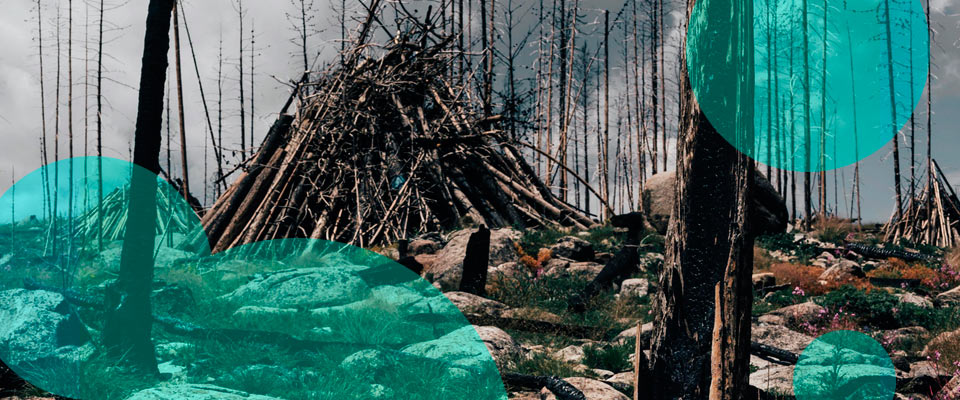Overview
The California Department of Insurance has finalized its review of the state’s first approved wildfire catastrophe model, marking a major shift in how property insurers may assess and price wildfire risk. Commissioner Ricardo Lara introduced the regulatory change as part of his Sustainable Insurance Strategy.
For the first time in California history, insurance companies will be required to write more policies in wildfire-distressed areas. This closes one of the biggest coverage gaps across the state
Commissioner Ricardo Lara
“Under existing regulations, insurers have raised rates without guaranteeing coverage or committing to Californians, causing distress for homeowners. That ends now,” said Commissioner Lara.
The model, developed by Verisk’s Extreme Event Solutions division, is now available for use in ratemaking under new state regulations designed to stabilize the troubled homeowners insurance market.
The determination comes amid growing concern over insurance availability in fire-prone regions. Several major insurers have scaled back coverage in California, citing unsustainable losses and outdated rating tools.
By allowing the use of catastrophe models, the CDI aims to give insurers a more accurate and actuarially sound basis for pricing risk—while encouraging them to return to underserved areas.
Verisk’s model incorporates advanced science and data and accounts for both property-level and community-level mitigation efforts.
Expanding Coverage for Californians in Wildfire-Distressed Areas
With the most destructive wildfires in California history happening in the past decade — even before the unprecedented Los Angeles wildfires in January 2025 — people are paying more and getting less in coverage options.
Under the Sustainable Insurance Strategy’s new regulations, insurance companies will write higher risk homes affecting more than 1.5 mn homeowners in wildfire distressed areas and those on the FAIR Plan.
This will expand options and contribute to wildfire safety efforts – helping to drive down costs.
Stable and sustainable insurance rates
Wildfire catastrophes are one factor driving up the cost of insurance rates, along with liability, inflation, building material costs, and other causes. Under the previous system of historical data, insurance consumers are paying balloon premiums and rate spikes after major wildfires, without increased availability.
Wildfire catastrophe models will contribute to more stable and sustainable insurance rates, without year to year fluctuations following major disasters — while reflecting the best available scientific data on mitigation efforts for the first time by homeowners, businesses, local communities, state and federal governments, and utility companies.
“Only in California” requirement to write more policies
Wildfire catastrophe models have existed for more than 20 years, and every other U.S. state allows insurance companies to set their rates using this modeling. But California is the only state where insurance companies will commit to writing more policies in higher risk areas under the Strategy.
Thorough review with public input
The Department’s Model Advisor led an extensive and thorough six-month process to vet the integrity of the Verisk Wildfire Model for the United States that was open to public participation.
The Department’s regulation provides a focused, transparent, and efficient way for insurance companies to utilize a model in a rate filing.
The Department posted a letter confirming the completion of its review of the Verisk Wildfire Model for the United States, and is currently reviewing models submitted by Karen Clark and Company and Moody’s.
Staying on time and on track despite Los Angeles wildfires
Commissioner Lara opened the model review on January 2, 2025, which was days before the devastating Los Angeles wildfires.
The Department has remained on time and on track while aggressively investigating consumer complaints from the Los Angeles wildfires, resulting in more than $67 mn returned to wildfire survivors to date since January.
Temporary coverage for homeowners and businesses
A new “high value” FAIR Plan commercial policy takes effect this Saturday, July 26, offering temporary coverage up to a total aggregate limit of $100 mn per location for homeowners and condo associations, farms, and other businesses.
The program would expire in 2028 once market improvements take hold.
Net Cost of Reinsurance in Ratemaking Regulation

The new Net Cost of Reinsurance in Ratemaking Regulation requires insurance companies — for the first time — to increase coverage in high-risk areas, ensuring more options for Californians while limiting the costs passed on to consumers.
The regulation works hand-in-hand with other reforms that Commissioner Lara has spearheaded that will have the effect of increasing insurance coverage options for Californians across the state.
Californians deserve a reliable insurance market that doesn’t retreat from communities most vulnerable to wildfires and climate change
Commissioner Ricardo Lara
“This is a historic moment for California. My Sustainable Insurance Strategy is focused on addressing the challenges we face today and building a resilient insurance market for the future. With input from thousands of residents throughout California, this reform balances protecting consumers with the need to strengthen our market against climate risks,” said Commissioner Lara.
Reinsurance is a financial tool that is part of how insurance companies manage their risk portfolios associated with the policies they write to homeowners and business owners.
Its roots date back to the 14th century, when merchants and traders sought ways to spread the risks of perilous ocean voyages, often relying on multiple insurers to cover their ventures. Today, as climate risks escalate across the nation, reinsurance has become an even more imperative component of insurance companies operating in high-risk and distressed areas, including California.
Modernizing regulations around reinsurance will enable insurance companies to expand coverage and write more policies in communities across the state facing greater risk, ensuring stability and resilience in our insurance market.
Insurers Opting to Use Catastrophe Modeling

Insurers opting to use catastrophe modeling in rate filings must commit to writing more policies in wildfire-prone regions—an effort aimed at reducing dependence on the California FAIR Plan and surplus lines insurers.
The Los Angeles wildfires are expected to be a major catastrophic event for the insurance industry. However, analysts indicate that the insurance and reinsurance sector remains well-capitalized to manage losses, though some insurers may face greater challenges than others.
The longer-term impact on California’s insurance market from the Los Angeles County wildfires may be substantial, as insurers will further re-examine their appetites for wildfire risk as it has become highly unpredictable concerning location, intensity and seasonality.
The California FAIR Plan’s exposure rose 42% to $650 bn during the nine months ending in June, as more insurers declined to renew or offer policies.
Increasing risks from climate-driven wildfires and insufficient insurance rates have reduced the coverage options available to consumers in the voluntary market.
Enrollment grew 31% to 610,179 dwelling and commercial policies in force since the end of the association’s fiscal year in September. Written premium increased 33% since September to $1.84 bn, including $1.64 bn for dwellings and $201.2 mn for commercial properties.
The California FAIR Plan paid $2.7 bn after receiving more than 5,000 claims from the Palisades and Eaton fires in Los Angeles in January, resulting in an $800 mn deficit.
Almost half of policyholders reported total losses. At the end of the first quarter, the plan reported $1.58 bn in cash and receivables. It allocated $2.38 bn for outstanding liabilities, which caused the shortfall.
The association explained that its typical surplus balance reflects available cash for catastrophe and non-catastrophe claims and related expenses.
Following the LA fires, a $1 bn assessment was imposed on member insurers. At the time of the fires, the FAIR Plan held $377 mn in cash and reinsurance capacity, according to the California Department of Insurance.
This closes one of the biggest coverage gaps across the state. Insurers have been raising rates without committing to coverage. That ends now.
Even as California moves to address regulatory obstacles to fair, actuarially sound insurance underwriting and pricing, the state’s risk profile continues to evolve in ways that underscore the importance of risk-based insurance pricing and investment in mitigation and resilience, according to Insurance Information Institute and HazardHub’s.
California Homeowners Insurance Market in Crisis

California’s property insurance market has been under pressure for years due to frequent, high-cost wildfire seasons. According to CalFire, 7 of the 10 most destructive wildfires in state history occurred within the last decade.
The resulting losses have pushed more homeowners toward the FAIR Plan and surplus lines coverage.
New data from the Surplus Line Association of California shows that surplus lines transactions for homeowners insurance rose 119% in the first half of this year compared to the same period in 2024.
The 2024 Los Angeles wildfires intensified the crisis. The fires destroyed more than 16,000 structures and caused an estimated $30–35 bn in insured losses. Thirty lives were lost.
Major carriers—including State Farm, Allstate, Farmers, and Mercury—each reported paying more than $1 bn in claims. State Farm alone processed 12,855 claims and paid over $3.96 bn as of mid-June.
Insurance Underwriting Profits Can’t Keep up with Losses
Insurers’ underwriting profitability is measured using a “combined ratio” that represents the difference between claims and expenses insurers pay and the premiums they collect. A ratio below 100 represents an underwriting profit, and one above 100 represents a loss.
Insurers have earned healthy underwriting profits on their homeowners business in all but two of the 10 years between 2013 and 2022.
However, the insurance claims and expenses paid in 2017 and 2018 – due largely to wildfire-related losses – were so extreme that the average combined ratio for the same period was 108.1 (see Natural Catastrophes Drive Record-High Economic and Insured Losses).
Underwriting profitability remains essential because it supports policyholder surplus—the financial reserve insurers maintain to pay future claims.
Accurate pricing based on risk ensures this surplus remains stable. Insurers must align pricing and underwriting with actual risk levels, especially in regions exposed to significant hazards.
Insurer Response and Rate Hike Controversy
State Farm, which insures about 20% of California homeowners, has filed for significant rate increases to offset wildfire losses. In May, the company raised its request after receiving approval for an earlier 17% hike—an interim compromise after an initial proposal was denied.
A report by the Center for Climate Integrity estimates that if the latest request is approved, the average homeowner could pay $1,015 more in 2026 than in 2023.
A climate-focused activist group also warns that the increased use of catastrophe models in rate filings could lead to further rate hikes for consumers.
Consumer Watchdog, a longtime critic of Lara’s reforms, has voiced concern over both the use of catastrophe modeling and insurer access to reinsurance pricing in rate calculations. The organization has been contacted for further comment.
Model Adoption and Market Expectations
The Verisk Wildfire Model for the United States had already been approved for use in Nevada. California’s adoption comes after a thorough evaluation under the CDI’s Pre-Application Required Information Determination (PRID) process.
The department will now begin accepting insurer rate applications that use the model, along with detailed commitments to write more policies in both residential and commercial markets.
Rob Newbold, president of Verisk Extreme Event Solutions, welcomed the development. “This is a transformative moment for the insurance industry and for California homeowners and businesses,” he said. “We’re proud to support efforts to bring stability to the market.”
While consumer advocates remain cautious, the approval marks a new phase in California’s attempt to balance actuarial accuracy with public access to insurance. The CDI’s challenge now is to ensure that model-driven pricing does not erode affordability while improving availability in high-risk zones.
FAQ
The Verisk Wildfire Model, developed by Verisk’s Extreme Event Solutions division, is California’s first approved catastrophe model for use in wildfire risk assessment. It allows insurers to evaluate property-level and community-level wildfire risk with greater accuracy when setting insurance rates. The California Department of Insurance (CDI) approved the model as part of reforms to stabilize the homeowners insurance market and ensure availability in wildfire-prone regions.
Under Commissioner Ricardo Lara’s Sustainable Insurance Strategy, insurers can now use catastrophe models in ratemaking if they agree to write more policies in high-risk wildfire zones. This is part of a broader effort to reduce reliance on the California FAIR Plan and surplus lines market. The Net Cost of Reinsurance in Ratemaking Regulation further requires carriers to expand coverage in distressed areas while limiting cost transfers to consumers.
For the first time, insurers can include the net cost of reinsurance in rate filings if they commit to greater coverage in fire-prone areas. Reinsurance, a longstanding risk management tool, helps carriers absorb large losses. Modernizing how reinsurance costs are factored into pricing allows insurers to better manage wildfire exposure and expand voluntary market coverage across the state.
Frequent, destructive wildfires have driven massive insured losses, making coverage in high-risk areas harder to find. According to CalFire, 7 of the 10 most destructive fires in state history occurred in the past decade. In response, major insurers scaled back or exited the market. Transactions in surplus lines rose 119% year-over-year, and FAIR Plan enrollment increased 31% since September. The 2024 Los Angeles wildfires alone caused up to $35 bn in insured losses and further strained capacity.
Insurers measure profitability using the combined ratio—claims and expenses divided by premiums collected. A ratio above 100 signals a loss. Between 2013 and 2022, the average combined ratio rose to 108.1, largely due to the 2017 and 2018 wildfire losses. Insurers like State Farm have responded with rate increase requests, citing billions in payouts. Accurate risk-based pricing is necessary to maintain underwriting profit and protect policyholder surplus.
Consumer advocacy groups, including Consumer Watchdog, argue that using catastrophe models could inflate premiums, particularly if reinsurance costs are passed to policyholders. A recent analysis by the Center for Climate Integrity estimates that the average California homeowner could pay over $1,000 more annually by 2026. Critics warn that without strict oversight, modeling could undermine affordability—even as it helps improve insurer participation in high-risk areas.
The CDI will now accept insurer rate applications that rely on the Verisk Wildfire Model. Insurers must submit detailed plans to expand coverage in both residential and commercial markets. This approval signals a shift toward modern, risk-based underwriting in California. The goal is to restore market stability while ensuring communities exposed to wildfire risk have access to affordable coverage.
AUTHOR: Nataly Kramer // QUOTTE: Rob Newbold – president of Verisk Extreme Event Solutions









